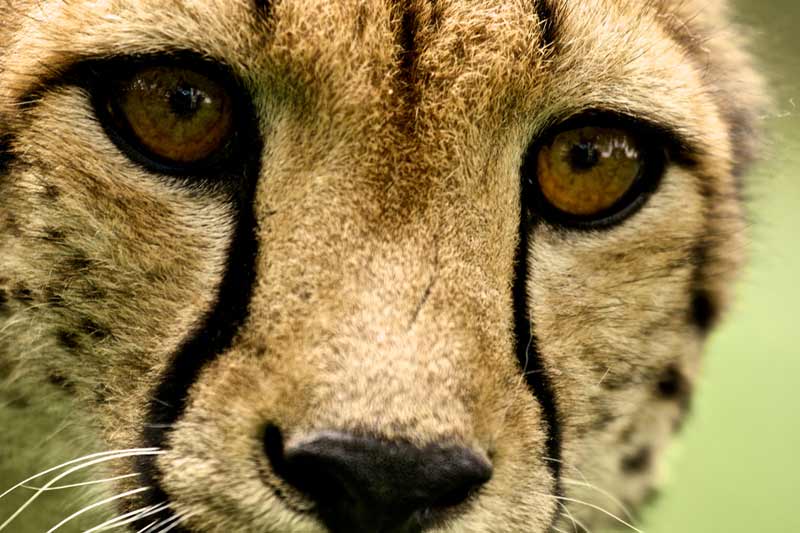The Bigger the Eyes the Faster the Beast, Study Finds

The fastest runners in the animal kingdom have some of the biggest eyes for their body size, researchers have found. Turns out, often the bigger the peepers the better the eyesight, which is beneficial when moving quickly.
"Eye size is one of the most important factors for understanding visual abilities and the evolution of visual adaptations," study researcher Chris Kirk, associate professor at The University of Texas as Austin, told LiveScience in an email. "In vertebrates, increases in eye size can benefit both acuity (detail vision) and sensitivity (vision in dim light)."
Some animals rely more on senses other than eyesight, but for many it plays an important role. This seems to be especially true in fast runners.
"If you can think of mammals that are fast like a cheetah or horse, you can almost guarantee they’ve got really big eyes," Kirk said in a statement. "This gives them better vision to avoid colliding with obstacles in their environment when they’re moving very quickly."
To figure out what factors influence eye size, the researchers collected measurements of eye size, body size and running speed in 50 mammals. They found that 89 percent of the variation in eye size among these mammals was due to body mass and maximum running speed.
"You start looking at comparative data and one thing that is always going to influence eye size is body size," Kirk said. "An elephant is always going to have bigger eyes than a mouse."
Even after adjusting for body size, the researchers found a significant effect of running speed on eye size.
Get the world’s most fascinating discoveries delivered straight to your inbox.
"There is going to be the effect of body mass, but when you look at maximum running speed in isolation or when you hold body mass constant, it’s still significantly related to eye size," Kirk said. "And when you combine maximum running speed and body mass as your two variables influencing how big an eye is, they can explain almost all of the differences observed between species."
Interestingly, humans seem to buck this trend. We have large eyes, comparable to those of fast runners, like wolves, but our maximum running speeds are pitifully slow compared with other mammals.
"I'm often reminded of the Pekingese dog that I grew up with, who could run faster on four tiny legs than I could run on two long legs," Kirk told LiveScience. "At least in the case of humans, it's safe to conclude that fast running was not the selective factor that led to the evolution of our large eyes."
The study was published online Wednesday (May 2) in the journal Anatomical Record and was presented at the 2011 American Association of Physical Anthropology meeting.
You can follow LiveScience staff writer Jennifer Welsh on Twitter, on Google+ or on Facebook. Follow LiveScience for the latest in science news and discoveries on Twitter and on Facebook.
Jennifer Welsh is a Connecticut-based science writer and editor and a regular contributor to Live Science. She also has several years of bench work in cancer research and anti-viral drug discovery under her belt. She has previously written for Science News, VerywellHealth, The Scientist, Discover Magazine, WIRED Science, and Business Insider.



